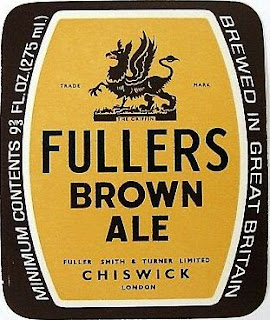What do I mean by that? All the coloured malt has been dropped and it’s been whittled down to three elements: base malt, flaked maize and sugar. And that’s how it remained right through until the 1960s.
Unfortunately, it’s not so clear what the exact shade of this beer was. Simply because a lot of the colour comes from the caramel and I’ve no idea exactly how dark that was. I’ve plumped for quite a dark caramel, which leaves it a typical Dark Mild colour. However, a paler type of caramel would have left it more in the semi-dark twilight zone. One thing is certain: with that No. 3 invert and caramel it definitely wasn’t pale.
On the subject of sugar, the second type of sugar was something called “pale trivert”. No. 1 invert seems like a good substitution.
Gracing the copper were three types of hops, Oregon from the 1907 harvest, Mid-Kent from 1909 and East Kent from 1908. Resulting in a slightly reduced (calculated) bitterness compared to 1897: 33 IBU as opposed to 39.
| 1910 Fullers X | ||
| pale malt | 7.75 lb | 73.88% |
| flaked maize | 0.67 lb | 6.39% |
| No. 1 invert sugar | 1.00 lb | 9.53% |
| No. 3 invert sugar | 1.00 lb | 9.53% |
| caramel 2000 SRM | 0.07 lb | 0.67% |
| Cluster 120 mins | 0.75 oz | |
| Fuggles 90 mins | 0.75 oz | |
| Goldings 30 mins | 0.75 oz | |
| OG | 1052 | |
| FG | 1011.5 | |
| ABV | 5.36 | |
| Apparent attenuation | 77.88% | |
| IBU | 33 | |
| SRM | 17.5 | |
| Mash at | 151º F | |
| Sparge at | 168º F | |
| Boil time | 120 minutes | |
| pitching temp | 59.5º F | |
| Yeast | WLP002 English Ale | |

No comments:
Post a Comment